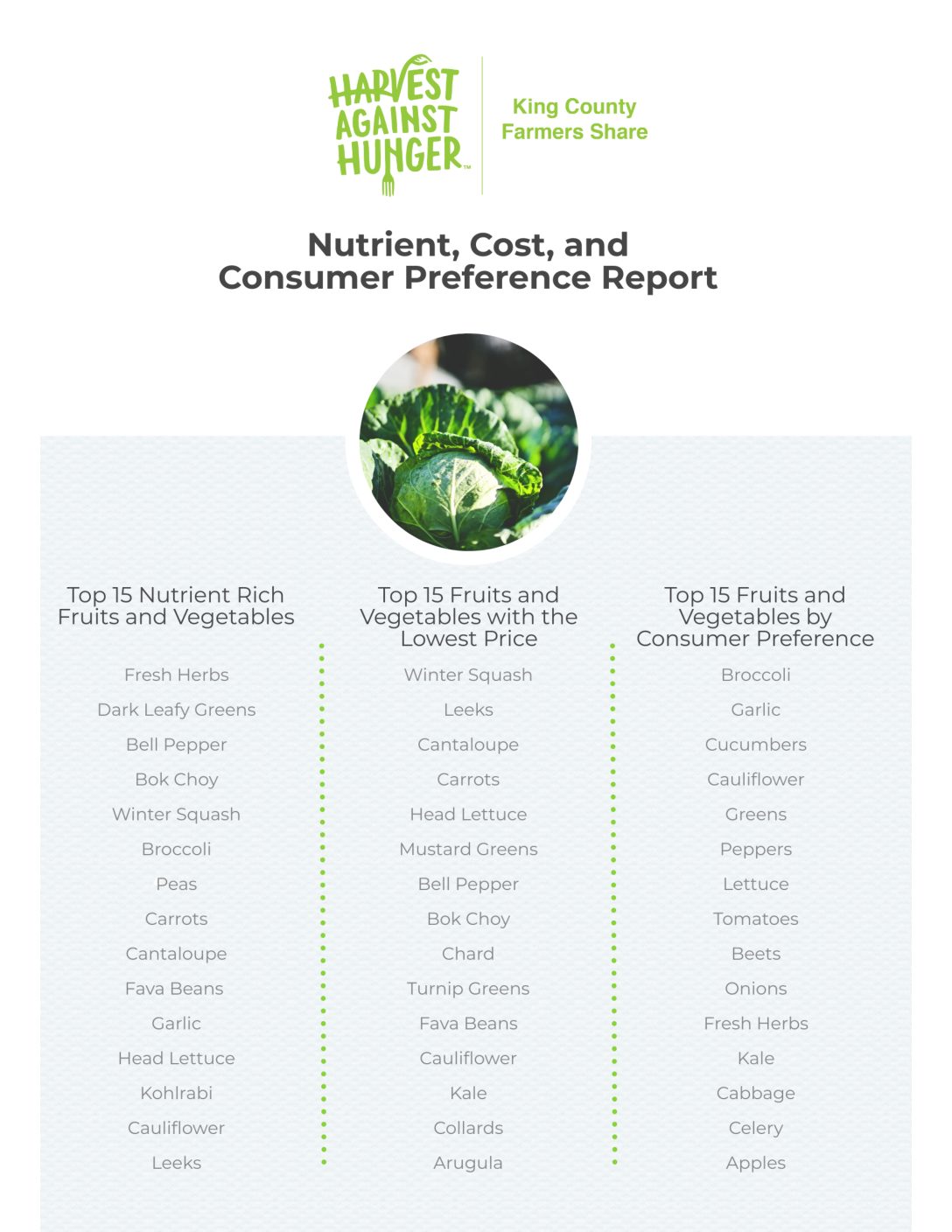Harvest Against Hunger helps feed people with nutritious produce by connecting farmers, transportation providers, food banks and produce packing facilities. Americorps VISTA Gayle Lautenschlager serves at Harvest Against Hunger and is working on the King County Farmers Share Program. By developing direct purchasing agreements between farmers and food banks, the program aims to increase access to healthy fresh foods in high need populations.
As food banks strive to provide produce with diverse nutritional profiles, to identify fresh produce with high nutrient density and to supply food bank customers with preferred produce a tool with which to refine pricing models based on key attributes like nutrient density, client preference, seasonal availability is needed.
In an effort to help food banks make informed decisions in allocating resources, Harvest VISTA, Gayle Lautenschlager worked with nutrition student, Kathryn Shanahan to study the intersection of price, customer preference and nutrient density in fresh produce. Optimizing nutrient intake, purchasing cost, and consumer preference was the primary goal with an additional goal of creating a nutrient density calculator.
Customer preference was measured by utilizing a Vashon Maury Food Bank survey of 87 customers. According to the survey results, the top 5 produce items customers would like to see more of are broccoli, garlic, cucumbers, cauliflower and greens. Nutrient density was measured on produce grown in King County, Washington that has been purchased by food pantries utilizing grant funding from the King Conservation District. The top 5 nutrient rich foods purchased through the program in the 2019 growing season thus far are fresh herbs, dark leafy greens, bok choy and winter squash. The closest overlaps in scores, customer preference and price were dark leafy greens, bell peppers, head lettuce and cauliflower.
As hunger alleviation agencies seek to optimize their resources, tools such as nutrient density calculators help give relevant information and easy to use infographics help illuminate major variables. Future work at Harvest Against Hunger will focus on further development of these tools.




